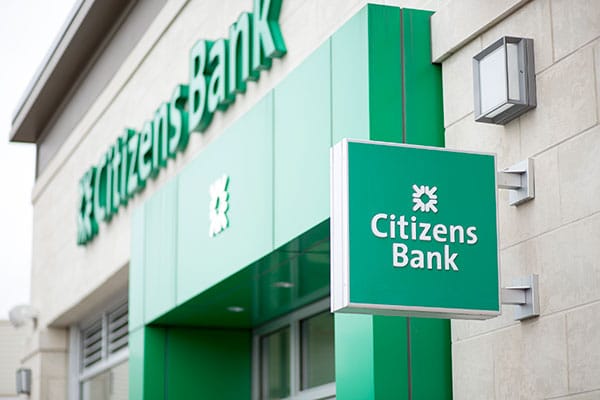With access to a real-time payments system an important selling point for some business customers, Massachusetts’ community banks find themselves at a fork in the road following the Federal Reserve’s decision to launch its own payments network.
Should they wait up to five years for a public alternative to The Clearing House’s real-time payments system to come online? Or should they jump on board with the only product out there right now for seamlessly transferring funds between accounts held by different banks, but risk giving the big banks that control TCH market power they may find hard to take back?
The Federal Reserve announced last week it will develop a new, around-the-clock, real-time payment and settlement service, called FedNow, to support faster payments in the United States. The board anticipates FedNow will be available in 2023 or 2024.
“Everyone deserves the same ability to make and receive payments immediately and securely, and every bank deserves the same opportunity to offer that service to its community,” Federal Reserve Board Governor Lael Brainard said in a statement. “FedNow will permit banks of every size in every community across the country to provide real-time payments to their customers.”
Rising Demand for Seamless Service
For any bank leaders who feel they can’t wait any longer to offer real-time payments to their customers, The Clearing House’s two-year-old product, the RTP Network, is hard to beat.
“The TCH pricing model is open, transparent and low. I think the Fed would have a harder time pricing lower,” Aite Group analyst Erkia Baumann told Banker & Tradesman.
The Clearing House is owned by the country’s largest commercial banks and settles nearly $2 trillion in U.S. dollar payments each day. It connects about 51 percent of the country’s demand deposit accounts and counts 16 mostly regional and national banks as its members, including the $1.6 billion-asset Hudson-based Avidia Bank and Boston-based Berkshire Bank.
In most customers’ personal financial lives, seamless, real-time money transfers are the norm, whether through Venmo, credit cards or some other technology. Demand for that convenience is bleeding over to business customers, Baumann said.
On top of that, access to a real-time payments system can help small and medium-sized businesses avoid a sudden liquidity crisis when a customer’s payment is sent out late or is otherwise delayed, and even improve a business’ cashflow.

The Clearing House is owned by the country’s largest commercial banks and settles nearly $2 trillion in U.S. dollar payments each day. It connects about 51 percent of the country’s demand deposit accounts and counts 16 mostly regional and national banks as its members.
“A large percentage of SMBs every year dissolve because of liquidity issues, not because of they don’t have a good product or service,” she said.
Avidia is using its membership in the RTP Network to stand out from the crowd as it seeks to partner with innovative fintechs.
Some Fear Concentration of Power
This access and price point come with a potential cost, however.
“Some smaller and community banks have believed that the big banks are creating a payments monopoly, so to speak, and will be able to manipulate the pricing and banks that are connected at will,” Baumann said. “Going with a public-sector solution eliminates that fear.”
TCH tried to dispel such concerns in a statement issued following the Fed’s announcement.
“The network was built for and is available to every U.S. depository institution, regardless of size, on equitable terms (no discounts for volume or minimum volume requirements),” the statement said. “While we will stay abreast of the Fed’s efforts to develop its own real-time payments system which may become available in 2023 or 2024, our focus will remain on ensuring that the RTP network has reach to all depository institutions.”
Still, the fear has been enough to keep mid-tier and smaller banks on the sidelines until now, along with other concerns including losing time to stop suspicious transactions granted by the current transaction lag time.
The Fed’s board last year requested public comment on potential services that could be developed by the Federal Reserve to support faster payments. Of the more than 350 comments that took a position on whether the Federal Reserve should develop a new service for faster payments, the central bank said in a statement, over 90 percent supported the Federal Reserve operating a real-time payment and settlement service alongside services provided by the private sector.
Smallest Banks Able to Wait
Some of the smallest community banks may find they are somewhat insulated from the general increase in demand for real-time payment services.
“For some of the banks that do wait [until 2024 to join FedNow], they have to know what’s at risk,” Baumann said. “For some of the smallest banks, the customers who need more complex functionality have already gone somewhere else.”

James Sanna
The banking industry’s largest trade group is not waiting for FedNow to come online, however. The American Bankers Association said last week it plans to continue urging all banks to use TCH’s existing real-time payments network.
“The reality is that any Fed-built system will still take some time to build,” the ABA said in a statement. “We believe any Fed system must be fully interoperable with the [TCH] RTP network, remain accessible only to chartered financial institutions and be available through all core processing companies and without volume discounts that disadvantage smaller banks.”
Regardless of what a bank decides to do, though, Baumann said no bank can continue to sit on the sidelines.
“The banks that thought they didn’t have to be concerned with real-time payments, that they weren’t a key product in the market – the Fed’s decision dispels that. It has to be a priority,” she said.






